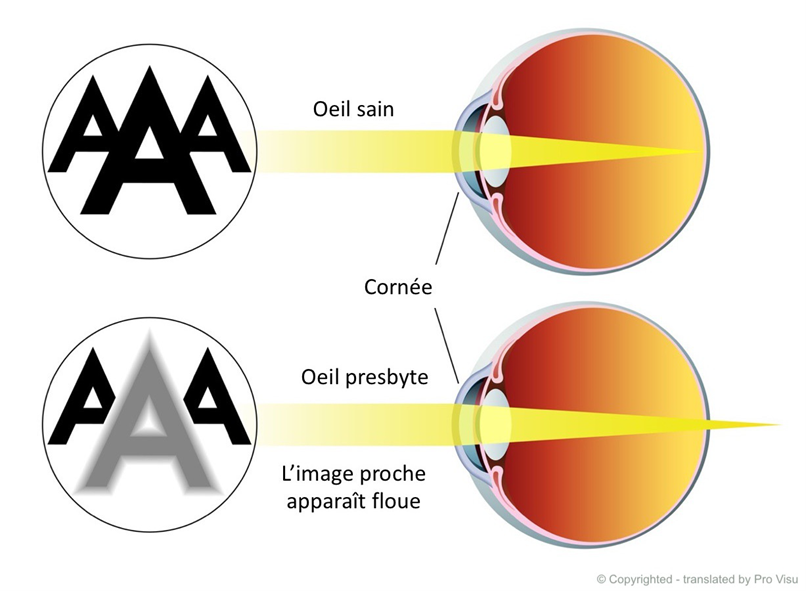Diseases
Presbyopia

Other terms
- Presbyopia
Definition
Presbyopia is a visual disorder caused by the loss of accommodation of the crystalline lens (the transparent lens behind the iris) over time. As a result, images are no longer formed in the right place, i.e. on the retina, but at the back of the eye, making near vision particularly difficult. This unavoidable disorder appears around the age of 45, then progresses up to the age of 65 before stabilizing. It is possible to compensate for the vision defect for a time by moving certain objects away from the eyes. However, correction is generally necessary, most often with adapted glasses.
Causes
Over time, the crystalline lens becomes rigid and loses its ability to change shape to adapt to the material being viewed. As a result, the eye gradually loses its ability to focus light rays on the correct part of the eye, namely the retina. Images, particularly those of nearby objects (the pages of a book, for example), then form at the back of the eye, resulting in blurred near vision.
It's worth noting that people suffering from myopia may have an advantage, with the discomfort appearing a little later. In fact, since myopia causes images to converge at the front of the retina, it compensates for the effects of presbyopia for a time.
Symptoms
There are a number of signs suggestive of presbyopia:
- Gradually, near vision becomes more difficult, forcing the person concerned to move the book or object away from the eye to obtain greater sharpness.
- In a dark environment, this need to move the object away is all the more pronounced.
- Presbyopia can also lead to eye fatigue and headaches.
Diagnosis
Presbyopia is diagnosed on the basis of a visual acuity test, including a refraction assessment. This makes it possible to determine the degree of presbyopia and the correction required.
Treatments
Presbyopia can be corrected with glasses or adapted contact lenses (progressive or multifocal correction).
Surgery may also be considered. Two approaches are possible:
- Laser surgery: to improve distance vision by slightly modifying the shape of the cornea.
- Placement of a multifocal intraocular implant: replacing the crystalline lens, which has become too rigid, the implant restores the proper convergence of light rays, enabling clear vision to be regained, both near and far.
References
Presbytie - Hôpital ophtalmique Jules-Gonin
La presbytie : causes et traitements en Yvelines, Le Port Marly - OPH78

